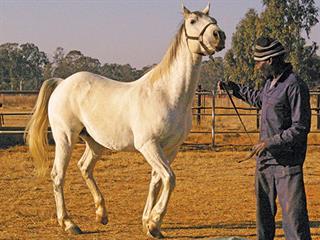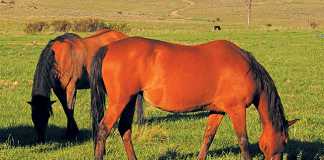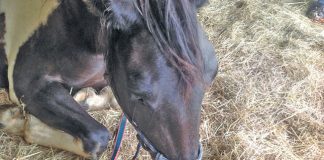
I have been riding since before I was two years old. Yet, even with many years of experience in the saddle, a few things can still unsettle me – like a horse that rears! In my opinion this is one of the most dangerous vices horse can have. Once a horse has discovered it can stand on its hind legs, it can use this method of resistance whenever it does not feel like doing what you ask of it. What’s more, confirmed rearers are almost impossible to cure!
Rearing normally starts with a simple “I don’t want to go forward”. This is called jibbing. A horse that refuses to go forwards in a required direction is said to “jib”. The cause is usually bad management.
Give it the reins
It’s essential that the horse never discovers it can avoid going forward. For example, if you’re teaching a young horse to pull a cart, you must ensure the load is always easy for it to cope with. Once the horse stops because the cart is too heavy, it’ll learn to jib. Another example is the puddle in a field. If the horse discovers that you will give in and let it go around the puddle, it wins and from then you will always lose!
If your horse is being ridden and rears up, lean into its neck and give it the reins. If you lean back and yank on the reins, you’ll pull the horse over and on top of you. As your horse comes down, swing it into small circles before asking it to move forward again. If it still insists in trying to rear up, rotate your horse in the opposite direction. Make it do several circles and then move it on.
Extreme cases
If your horse rears while being led or long lined, you’ll need to have a safe area to work in. It is relatively easy to get a horse off balance when it rears, thus sweeping it off its feet. The horse won’t like this very much and it should make it think twice before doing it again. The danger of this method is it could result in injury. So if you’re unsure if the horse is really trying to rear, rather do not resort to such violence!
Some young horses will rear occasionally, but once they find it has no effect, they will stop. It’s therefore not a good idea to pull such a horse over! The best option, here, is to let the horse have the rein and not to apply any pressure. The horse will only pull if you do. If it realises it’s not getting a fight, it should not put up one. This will give you time to convince the horse that you are not going to hurt it.
On a few occasions a horse can be rearing because of pain in the mouth. From the time your horse is one year old, have it checked out by an equine dentist every six months. Ultimately, I try to empathise with my equine friends. The mere thought of someone controlling my movements with a bit in my mouth always makes me pray riders have soft hands.
During a recent trip to Dubai I had the privilege of attending the world famous Cavalli show. This amazing display of horsemanship makes you realise how little a rider needs to make a horse want to do what you want.
Contact Kim Dyson on 082 888 6511.













